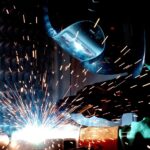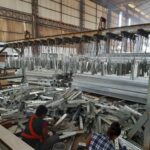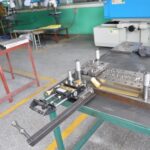Material Fatigue and Stress: Understanding How Repeated Stress Can Lead to Fastener Failure
What is Material Fatigue?
Have you ever asked yourself why industrial fasteners can fail even when they look strong? The culprit is often material fatigue. This is a process where a material is subjected to stress repeatedly and micro cracks start developing in the material. These cracks gradually widen and at some point, lead to the failure of the material in question. Consider a paperclip, one can fold it and unfold it several times, but at some point, it will break. That is the material fatigue at work!
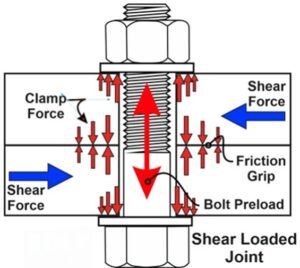
Real-World Engineering Example
The Tacoma Narrows Bridge, also known as “Galloping Gertie,” famously collapsed on November 7, 1940, just a few months after it opened.
Key Issues Leading to the Collapse:
- Aeroelastic Flutter: The wind-induced oscillations became so severe that the bridge structure couldn’t handle the stress.
- Lack of Wind Bracing: The bridge lacked adequate wind bracing and structural dampers to counteract the forces from the wind.
- Design Flaws: The bridge was designed to be lightweight and flexible, which unfortunately made it susceptible to wind-induced vibrations.
Preventive Measures That Could Have Been Taken:
- Wind Tunnel Testing: More thorough wind tunnel testing during the design phase could have identified the potential for aeroelastic flutter.
- Structural Dampers: Incorporating dampers and other devices to absorb and dissipate wind energy could have prevented the oscillations.
- Stiffening the Structure: A stiffer design with more robust wind bracing would have reduced the susceptibility to wind-induced vibrations.
- Use of Proper Fasteners: Ensuring the use of high-quality fasteners, such as ASTM A325 bolts to enhance the overall durability and resilience of the structure under dynamic loads.
Standards and specifications are very important in any given project.
Standards and specifications are very important in the aspect of durability of industrial hardware. For instance, ASTM A325 is a specification for structural bolts with a tensile strength of 120 to 160 ksi. Fasteners that conform to this standard are expected to handle a lot of stress and they should not fail. Using fasteners that meet these standards on a regular basis means that you will have a longer service life and improved performance.
Types of Fasteners and Their Uses
There are various types of fasteners available in the market and all of them are of different shapes and sizes and are used for different applications. For ex, specialty hardware like U bolts is generally employed to fasten pipes and conduits to structures, J bolts are usually used in concrete foundations because of their J shaped structure, black bolts also known as black oxide bolts are used in electronics and automotive, an all thread rod or a a307 threaded rod is a very useful construction accessory, aluminum rivets find application in lightweight structures like aerospace and automotive, copper rivets are used in electrical installations, roofing, and plumbing & stainless steel rivets are deployed in marine environments, food processing, and medical devices.
Each type must withstand unique stresses, and understanding of this helps in selecting the right fastener for a project
This paper aims at examining the role of fastener materials.
It is evident from the above discussions that the material of an industrial fastener is a critical factor that determines the amount of stress that a fastener can manage. For ex, Aluminum rivets are light in weight and do not corrode easily hence suitable for use where weight is an issue. Copper rivets are good conductors of electricity and are commonly used in electrical applications. For demanding conditions such as high stress, stainless steel rivets are used because of their high strength and fatigue characteristics.
The Importance of Testing
Fatigue testing is another important process in which industrial fasteners are subjected to repeated cycles of loading and unloading, replicating the stresses as in practical applications. This testing enables one to estimate the time the fasteners will last under constant pressure. This way, fastener manufacturers are able to note areas that they need to strengthen to make the products more durable.
Specifications like the ASTM A325 offer information on mechanical characteristics of structural bolts like tensile strength, yield strength and percentage elongation. This makes it possible for nuts bolts and washers that are to be used in construction to be capable of handling the loads that are likely to be placed on them.

For instance, stainless bolts are often used in environments where corrosion resistance and high strength are essential. These bolts must meet ASTM F593, to ensure they perform reliably under harsh conditions. Likewise, aluminum rivets, copper rivets, and brass rivets must meet certain standards, such as ASTM B209 for aluminum, ASTM B152 for copper, and ASTM B36 for brass, to ensure their appropriateness and durability in various applications.
Metallurgical Testing
The microstructure of fasteners must be examined and for this metallurgical testing is crucial. This entails looking at the grain size, the phase distribution and whether there is any crack or void present. Methods like optical microscopy and scanning electron microscopy are applied. For instance, ASTM E112 gives the test methods for average grain size. This testing helps to confirm that the industrial hardware being used possess the right metallurgical characteristics to handle operational loads.
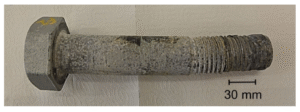
Chemical Testing in Spectroscopy
Chemical analysis identifies the materials of the fasteners through a chemical composition test. Chemical composition of the fasteners is determined using spectroscopy methods like X-ray fluorescence (XRF) and optical emission spectroscopy (OES). ASTM E415 is used in spectrochemical analysis of carbon and low alloy steel to ascertain that the chemical composition of the steel is as per the standards.

The Critical Role of Fastener Service Providers
Fastener service providers play a crucial role in maintaining the integrity of your projects. Whether your project requires a big bolt, U bolts, J bolts, nuts bolts and washers, stainless steel fasteners, flat washers, Belleville spring washers, fender washers, all thread rod, cap screw or a socket head cap screw always consult your fastener service provider for expert advice.
Improper Installation Techniques: Tips on Ensuring Correct Installation to Prevent Future Issues
Proper installation is very important when it comes to any type of structure.
You have all the industrial hardware you require, half nuts, big bolts, threaded bars but without professional installation, you are heading for trouble. Proper installation is very important since lack of it results in various problems including major problems affecting the structure of the building. No matter if you are using a standard fastener or a 3 4 all thread rod, it is important to get it right the first time.
Selecting the Right Fastener for the Application
To begin with, the right fastener for the project must be chosen. Fastener distributors provide many choices, so defining the requirement is crucial. For instance, a 1 2 all thread rod would be ideal for medium load applications while a 3 8 all thread rod would be suitable for light applications. It is always recommended to consult engineering standards such as ASTM and ISO to determine the right industrial fastener to use.
Follow Manufacturer Specifications
Each industrial hardware comes with specific recommendations of the fastener manufacturer. Ignoring these can result in improper installation and potential failure. For instance, when applying a half nut in an area that experiences high vibrations, it may become loose due to the vibrations. It is always advisable to adhere to the specifications given by fastener distributors to avoid short product life and accidents.
Torque Matters
The right torque always has to be applied. It is also important not to over-tighten or under-tighten because these can affect the stability of your installation. Torque specifications are provided by fastener manufacturers and should be adhered to strictly. As per the standards like ASME B18. 16. 6 and ASTM F568M, proper torque provides the best performance and security. A calibrated torque wrench can be of great help in tightening nuts bolts washers to the required force.

Ensure Clean Threads
This is because clean threads will give a proper fit. It is common to have debris or damage that can hinder the nuts and bolts from seating properly. It is recommended that prior to installing your all thread rod and other fasteners, you should clean them and check for any defects. This small step can help avoid cross-threading and guarantee the connection is secure.
Avoid Cross-Threading
Cross-threading is a situation where the fasteners are not correctly oriented before they are tightened. This can damage the threads and weaken the joint. To prevent this, it is always recommended to begin threading nuts and bolts by hand before using the tools. This is especially so when dealing with threaded bars and all thread rods, which are always expected to be in a straight line.
Use Appropriate Tools
The tools used in installation are as important as the industrial hardware to be used in the process. Tools that are too big or too small may damage threads or apply substandard force on threads. For instance, applying an adjustable wrench on a big bolt may result in slippage and hence damage. Ensure that you have a good set of wrenches and torque tools that are suitable for the industrial fasteners or specialty hardware you are going to use.
Check for Corrosion Resistance
Depending on your project’s environment, corrosion resistance can be a significant factor. Those fasteners that are likely to come into contact with moisture or chemicals should be made of corrosion resistant material. Stainless steel fasteners, hot dip galvanized bolts and associated galvanized fasteners work well in such conditions. For example, using a standard fastener without proper corrosion resistance in a marine environment can lead to premature failure.
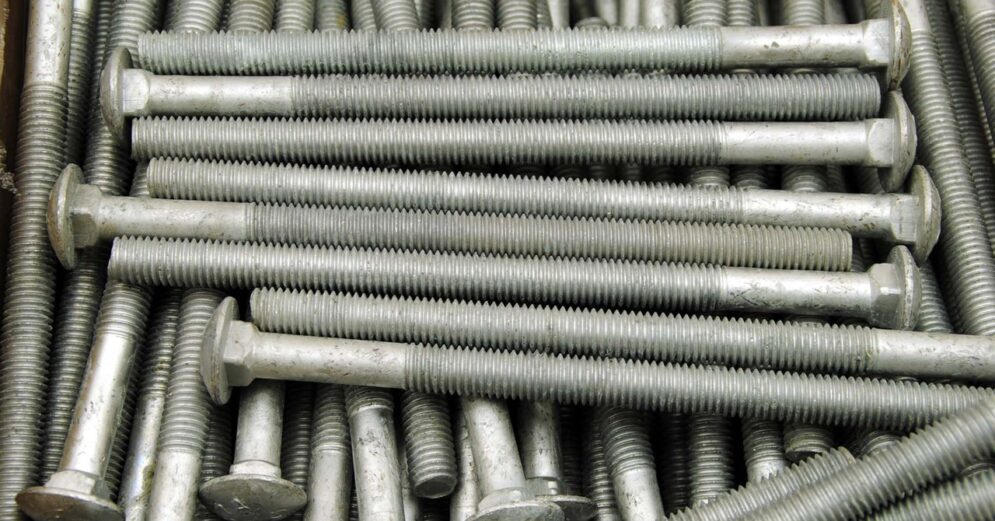
Regular Inspections
Over time, factors like vibrations, temperature fluctuations, and environmental conditions can cause fasteners to loosen. Regularly inspecting and re-tightening them as needed can prevent small issues from turning into major problems. This practice is especially critical in let’s say wind turbine assemblies, where big bolts and all thread rods hold the structure together, ensuring they remain tight preventing catastrophic failures. Regular maintenance checks are your best defense against unexpected breakdowns and to ensure the longevity and safety of your installations.
Documentation and Training
Last but not the least, make sure that all the installation processes are well documented and your team is trained well. A fastener, no matter how good it is or where it was purchased from, will not be effective if it was installed improperly. Providing your team with the right knowledge and resources is key to preventing future issues.
Environmental Impact on Fasteners: How Temperature, Humidity, and Other Factors Can Cause Degradation
Introduction to Environmental Impact
Have you ever wondered how environmental factors affect the tiny yet mighty fasteners holding your structures together? Environmental factors such as temperature, humidity and the likes are known to affect the lifespan of fasteners. Understanding these effects can help you choose the right materials, whether you’re working with stainless steel fasteners or for that matter aluminum rivets..
Temperature and Its Impact on Fasteners
Fluctuations in temperature pose a lot of problems to industrial hardware. Think of a bridge that has to withstand the harshest of winters and the hottest of summers. The expansion and contraction as a result of temperature fluctuations may result in material fatigue. For instance, stainless steel double end threaded studs, often used in high-temperature applications, are designed to withstand such thermal stresses.
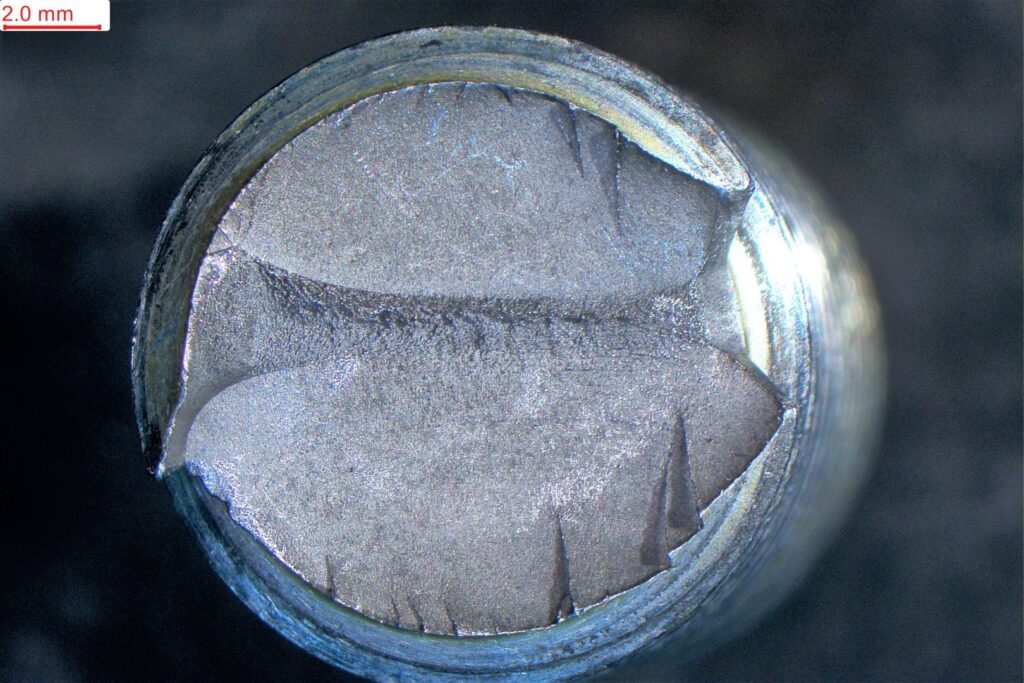
Hot dipped galvanized bolts are another excellent choice for temperature resistance. The galvanizing process, especially centrifugal galvanizing, creates a protective layer that prevents rust and corrosion even in extreme temperatures. When selecting industrial fasteners, always consider their temperature ratings and compliance with standards like ASTM A193 for high-temperature bolts.
Humidity and Corrosion
Humidity is a fastener’s worst enemy. High humidity increases the rate of corrosion, which results in the weakening of fasteners progressively. Especially for the coastal regions where the humidity level is high, the use of stainless steel fasteners is necessary. Stainless steel washers, nuts, and bolts do not rust and therefore are long lasting and safe to use.
An example of a marine application where industrial fasteners are immersed in saltwater can be considered. Stainless steel rivets are ideal here because they have high corrosion resistance. On the other hand, industrial hardware such as hot dipped galvanized bolts are ideal for humid conditions since they are coated with zinc.
Other Environmental Factors
Some other external factors such as UV rays, pollution, and chemicals also affect fasteners apart from temperature and humidity. In industrial settings, fasteners are subjected to various chemical agents that may be aggressive. In such scenarios, specialty hardware designed to resist chemical corrosion is essential. For instance, A4 stainless steel threaded rods are specifically engineered to withstand corrosive environments, making them perfect for chemical plants.
Pollution can introduce corrosive agents like sulfur dioxide into the environment, which negatively impacts industrial fasteners. For example, in urban construction projects where pollution levels are high, it is better to use high-quality stainless steel studs, stainless steel all thread rods for structural support and façade installation. These fasteners are specifically designed to withstand such harsh environmental conditions, ensuring structural strength and longevity.
Real-World Engineering Examples
In the construction of skyscrapers, the environmental influence on fasteners is a factor of concern. Stainless steel fasteners are preferred by engineers since they are strong and do not corrode easily. For example, the Burj Khalifa in Dubai that is exposed to high temperature and humidity required the use of stainless steel fasteners.
Similarly, the Golden Gate Bridge employs hot dipped galvanized bolts, to withstand the foggy and salty air of San Francisco Bay. This choice of material ensures the bridge remains safe and durable despite harsh environmental conditions.
Standards and Specifications
Selecting the right fasteners requires compliance with engineering standards and specifications. For instance, the ASTM F593 standard outlines the mechanical characteristics of stainless steel bolts so that they can endure environmental pressures. In the same way, ISO 3506 specifies the characteristics of stainless steel fasteners for use in corrosive conditions.
Quality Control in Fastener Manufacturing: Ensuring Reliable Connections
The Significance of Stringent Quality Checks
When it comes to industrial hardware—those tiny but crucial components holding everything together—quality control isn’t just a formality; it’s a safeguard against potential disasters. Imagine relying on steel rivets to secure a bridge or aluminum rivets for an aircraft wing. The integrity of these structures hinges on the reliability of every fastener used in the project.
Adherence to ASTM Standards
In the realm of fastener manufacturing, adherence to standards like ASTM (American Society for Testing and Materials) is paramount. For instance, ASTM A325 specifies the requirements for structural industrial bolts used in construction and heavy engineering applications. These standards encompass material composition, mechanical properties, and testing procedures to ensure consistent quality and performance.
Real-World Applications
Take the automotive industry, where fasteners must withstand vibrations, temperature variations, and stress. Here the nuts bolts and washers used in engines and chassis undergo rigorous testing to meet ASTM standards such as ASTM F606 for mechanical properties of fasteners. This ensures they maintain structural integrity under demanding conditions, preventing failures that could compromise vehicle safety.
Comprehensive Testing Methods
Ensuring fastener reliability involves a range of testing methods. Tensile testing assesses the maximum load a fastener can bear before breaking, crucial for determining its strength. Torque testing verifies that bolts can be tightened to specified levels without stripping or breaking, essential in assembly processes. Additionally, corrosion resistance testing, according to ASTM B117 salt spray test, evaluates how well fasteners endure environmental exposure, ensuring longevity in diverse applications.
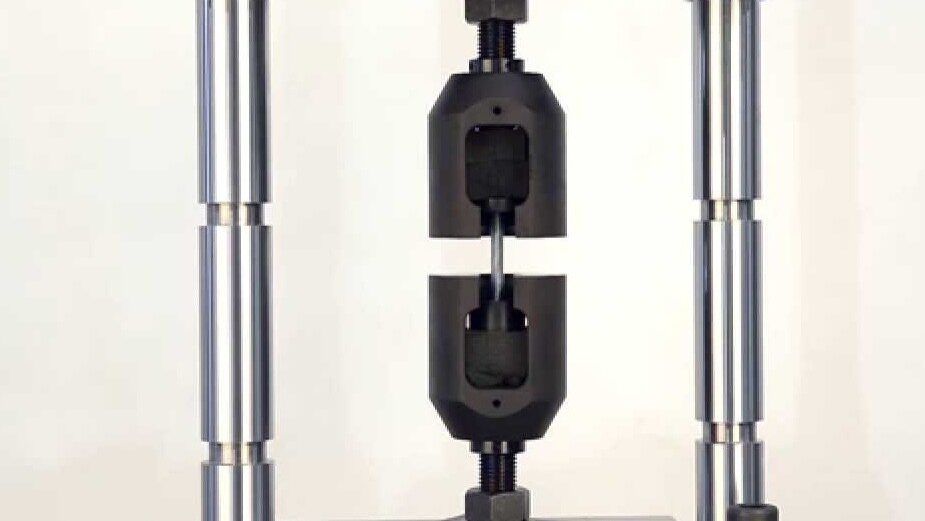
Inspection and Validation Processes
Inspecting fasteners involves meticulous checks for dimensional accuracy, surface finish, and structural flaws. Visual inspections alongside dimensional measurements ensure each fastener meets precise specifications outlined in ASTM standards. Automated inspection systems enhance consistency and reliability across production batches, minimizing the risk of defects slipping through.
Continuous Enhancement through Quality Assurance
Quality assurance protocols encompass every stage of fastener production—from raw material inspection to final product verification. These protocols establish stringent acceptance criteria based on ASTM standards, ensuring that only fasteners meeting exacting specifications proceed to market. Continuous improvement initiatives analyze data from quality checks to refine manufacturing processes and enhance product performance over time.
The reliability of fasteners hinges on rigorous adherence to ASTM standards throughout the manufacturing process. Whether you’re using ASTM A325 bolts in construction, ASTM F606 fasteners in automotive applications, or ASTM B117 for corrosion testing, these standards uphold the highest levels of quality and reliability. By investing in quality control, fastener manufacturers not only prevent defects but also uphold safety and performance standards across industries. So, the next time you fasten a bolt, remember: it’s not just about connecting—it’s about ensuring strength, durability, and peace of mind.



